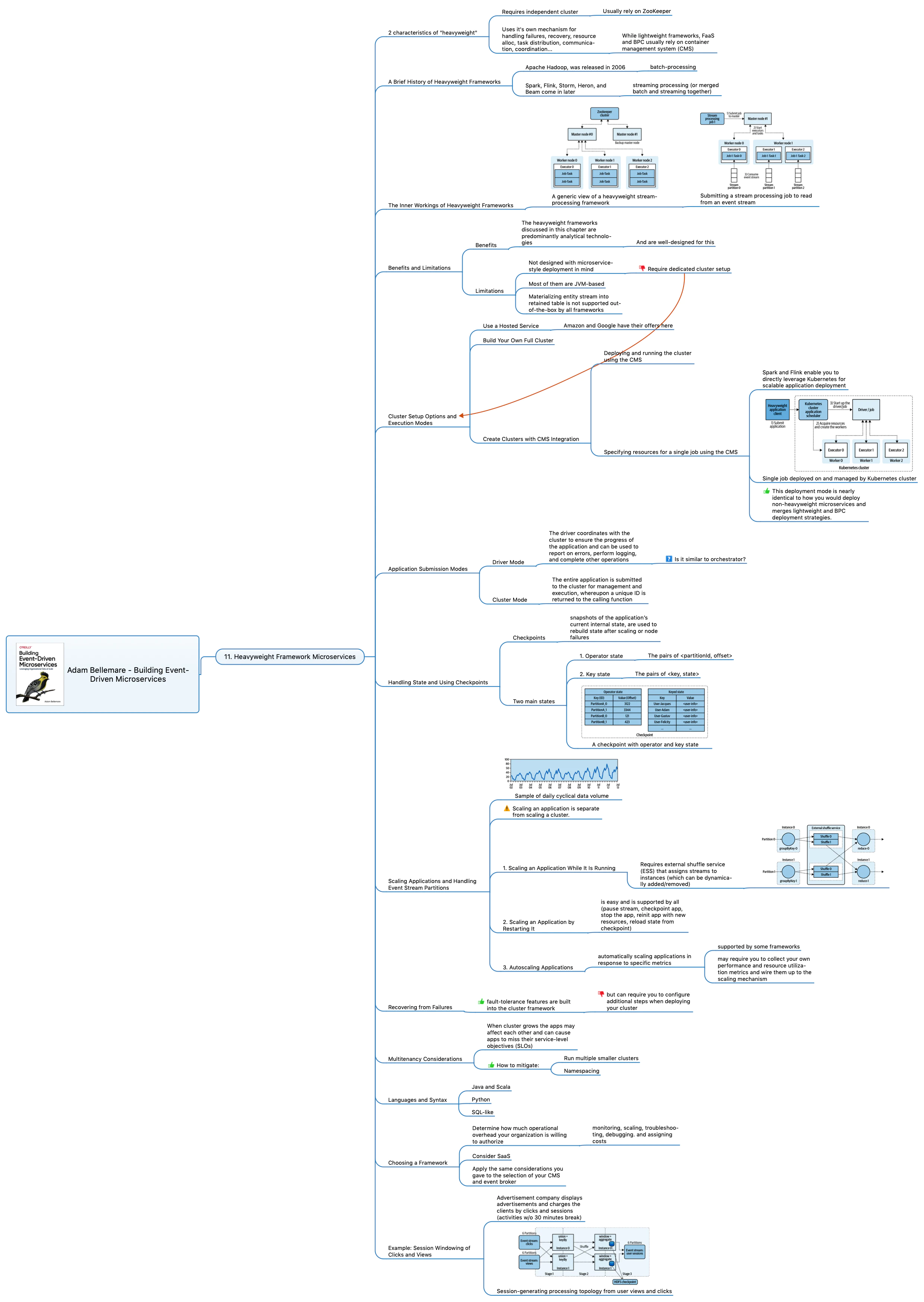Building Event-Driven Microservices - Chapter 11 - Heavyweight Framework Microservices

Heavyweight Stream Processing Frameworks are another foundation/pattern to build your microservices.
These frameworks are highly scalable and allow you to efficiently solve many analytical tasks. But they are not always good for stateful event-driven microservice application patterns.
Heavyweight frameworks operate using centralized resource clusters, which may require additional operational overhead, monitoring, and coordination to integrate successfully into a microservice framework. However, recent innovations move these frameworks toward container management solutions (CMS) such as Kubernetes that should reduce your efforts.
All of these is disclosed in the Chapter 11 of the book we are currently studying:
“Building Event-Driven Microservices: Leveraging Organizational Data at Scale” by Adam Bellemare
Sharing my mind map with all the details as usual:

See also:
- Building Event-Driven Microservices - Chapter 12 - Lightweight Framework Microservices
- Building Event-Driven Microservices - Chapter 15 - Testing Event Driven Microservices.
- Building Event-Driven Microservices - Chapter 9 - Microservices Using Function as a Service
- Building Event-Driven Microservices - Chapter 13 - Integrating Event-Driven and Request-Response Microservices
- Building Event-Driven Microservices - Chapter 10 - Basic Producer and Consumer Microservices